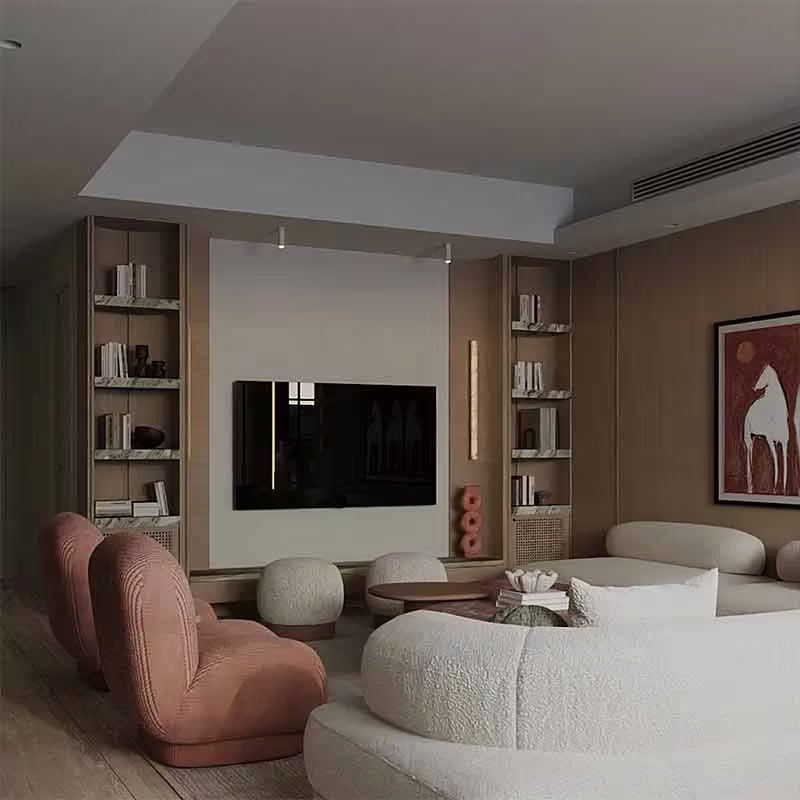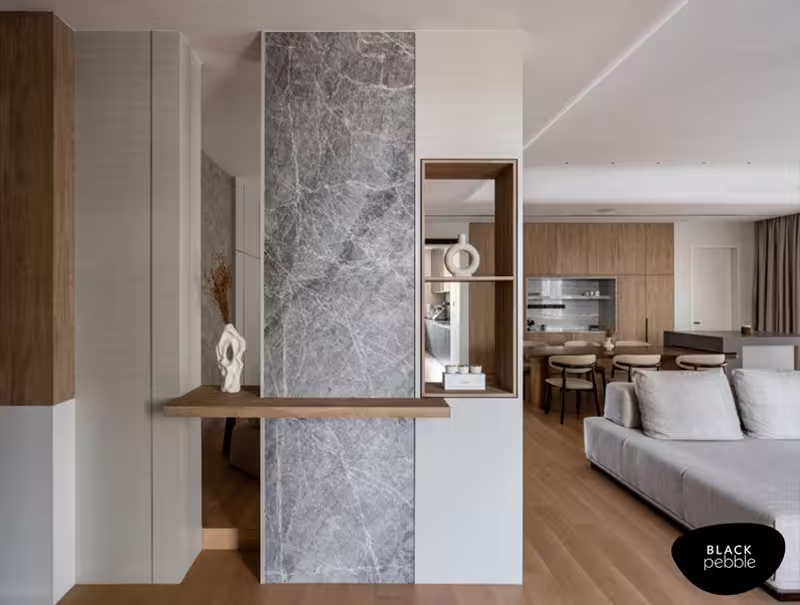
Open spaces in homes and commercial environments offer a unique canvas for creativity and functionality. However, many people struggle with how to effectively utilize these expansive areas without making them feel chaotic or unfocused. Creating distinct zones within open spaces is a strategic way to enhance the aesthetic appeal and practical use of these areas. Through thoughtful decor choices, one can transform an expansive room into multi-functional zones that cater to different activities and moods.
Understanding the Psychology of Space
Before diving into specific decor choices, it’s crucial to recognize the psychological impact of space on human behavior. Open spaces can evoke feelings of freedom and movement, but they can also lead to disorientation if not well-defined. By establishing separate zones, you create a sense of organization and purpose. This division helps individuals understand how to navigate the space efficiently.
For instance, consider an open-plan living area where multiple activities occur—watching television, reading, working from home, or entertaining guests. Each activity benefits from its own designated zone. Research indicates that clearly defined spaces can improve focus and productivity by minimizing distractions. Thus, the way we arrange our environment significantly influences our mental state and day-to-day experiences.
Defining Your Zones
The first step in creating zones is identifying their purposes based on your lifestyle needs. Common zones include relaxation areas, workspaces, dining spots, and play areas for children or pets. Understanding how you plan to use the space helps inform your layout decisions.
When defining these zones, consider both physical barriers and visual cues. Physical barriers could be furniture arrangements that create separations between different areas. For example, placing a sofa back-to-back with a bookshelf can delineate a cozy reading nook from a more active entertainment area.
Visual cues involve using decor elements such as rugs, lighting, or artwork to signal different functions within the same room. A large area rug can anchor a seating arrangement while distinguishing it from an adjacent workspace defined by a desk and task lighting.
Choosing Furniture Strategically
Furniture selection plays a pivotal role in zoning open spaces effectively. The goal is to select pieces that serve multiple functions while also enhancing the overall aesthetic.
Multi-functional Furniture: Consider investing in furniture that serves more than one purpose. A coffee table with built-in storage can double as both a visual anchor for your seating area and an organizational tool for books or magazines.
Scale Matters: The size of your furniture should match the scale of your open space. Oversized pieces may overwhelm smaller areas while too many small items can make the space feel cluttered. Aim for balance by mixing larger items with smaller accent pieces.
Flexible Seating: Poufs or ottomans provide additional seating when needed but can easily be moved or tucked away when not in use, allowing fluidity between zones.
Visual Cohesion: Select furniture styles that complement each other across different zones to maintain visual harmony while still providing functional diversity.
Color Coordination: Using color strategically can help define spaces without physical barriers; darker shades might signal a more intimate gathering spot while lighter hues contribute to an airy workspace feeling.
Lighting as a Defining Element
Lighting is often overlooked but is crucial in defining zones within open spaces. Different activities require varying light intensities and styles:
- Task Lighting: In workspaces or reading nooks, installing focused lighting like desk lamps or wall sconces offers adequate illumination for tasks without overwhelming brightness throughout the entire area. Ambient Lighting: Soft ambient lighting creates warmth in relaxation zones—think floor lamps with dimmers or pendant lights over dining tables. Accent Lighting: Use accent lights to highlight artwork or architectural features which not only adds interest but also visually separates different sections of your open space.
Carefully layering these types of lighting allows you to create moods tailored to specific activities occurring within each zone while ensuring flexibility during various times of day.
Utilizing Color Schemes
Color schemes are another powerful tool for demarcating zones within open spaces while contributing to overall harmony:
Paint Techniques: Painting one wall in a bold color can instantly set apart an area without closing it off entirely; this technique works well for home offices within larger living rooms.
Accent Walls: An accent wall featuring wallpaper or paint draws attention and implies purpose—ideal for creating focal points around workstations or leisure areas.
Complementary Palettes: While each zone may have distinct colors reflecting its function—such as calm blues for relaxation versus vibrant yellows for play—a cohesive palette ensures everything feels interconnected rather than disparate.
Textiles: Incorporate textiles such as curtains or throws that echo the color themes across different zones; this ties everything together visually while providing comfort.

Natural Elements: Adding plants not only enriches decor but introduces organic textures that soften transitions between various functional areas—which promotes relaxation in busy households.
Incorporating Personal Style
Your personal style should shine through every aspect of your decor choices; after all, this space interior decorators mangalore will be inhabited by you and those you invite into it:
- Displaying personal artifacts like photographs or travel souvenirs adds character uniquely tied to your life story. Opting for handmade items supports local artisans while ensuring originality in your decor choices. Curating art pieces that resonate emotionally cultivates an environment aligned with individual tastes, enhancing enjoyment levels within all designated zones.
Remember that creating zones does not mean sacrificing personal expression; instead it enhances it through careful planning around functionally distinct areas filled with decor reflective of who you are.
Practical Examples from Black Pebble Designs
Working alongside professionals like Black Pebble Designs - Interior Decorators in Mangalore brings valuable insights into transforming open spaces seamlessly into multifunctional havens tailored specifically towards client desires:
Case Study - A Family Home: A recent project involved designing an expansive living-dining area where family members frequently gathered yet struggled with spatial overlap during meals versus casual lounging times due to lack of defined boundaries.
- Solution included strategically placed sectional sofas paired harmoniously with large-scale artwork—creating natural separation between loungers versus diners without obstructing flow throughout room entirety.
- Implementation featured modular desks combined alongside movable partitions allowing adaptive layouts dependent on daily needs fostering both privacy during focused tasks while simultaneously enabling teamwork discussions effortlessly whenever required!
Such real-world applications illustrate how expert decorators leverage principles discussed earlier into actionable designs resulting in beautifully zoned living/working experiences resolving previously faced challenges effectively!
Final Thoughts on Zoning Open Spaces
Creating distinct zones within open spaces requires thoughtful consideration at every stage—from understanding psychology behind spatial arrangements down through executing design principles utilizing colors/textures/furnishings effectively aligned with personal style preferences!
By approaching this process holistically rather than merely focusing piecemeal solutions leads towards environments genuinely reflective functioning harmoniously catering diverse needs residing therein successfully!
Incorporating elements such as multi-functional furnishings paired alongside intelligent use lighting/decoration techniques fosters surroundings inviting connection amongst inhabitants regardless whether hosting friends over dinner evenings cozy family movie nights weekends spent unwinding after long days worked tirelessly… All achieved merely through intentional thorough approaches applied thoughtfully throughout design journey ahead!
Black Pebble Designs - Interior Designer in Mangalore
Address: 1104 Planet SKS, Kadri, Mangaluru, Karnataka 575004
Phone: +918106071763
Email: [email protected]
Open Hours: Mon-Sun 9:00AM - 8:00PM